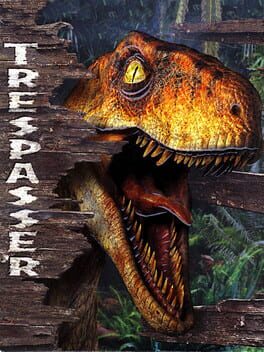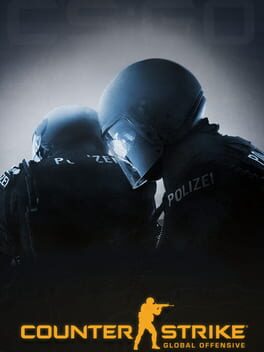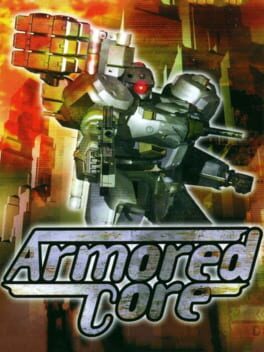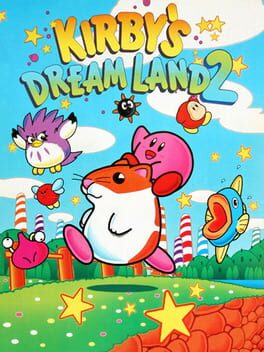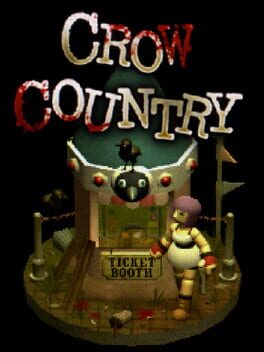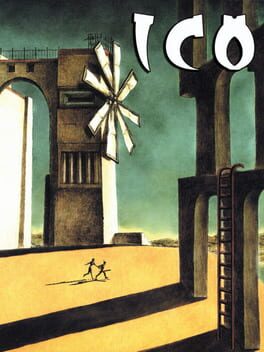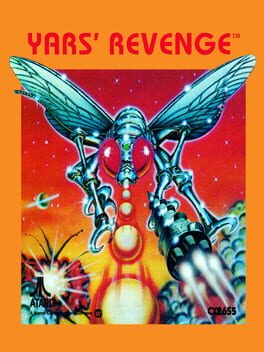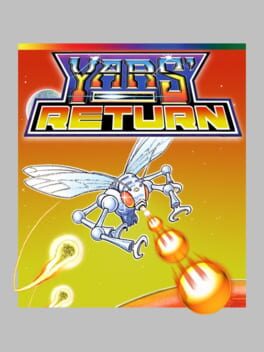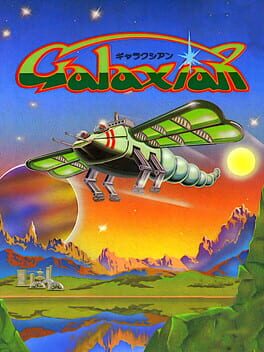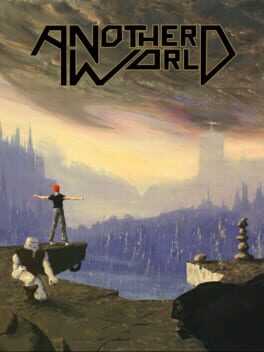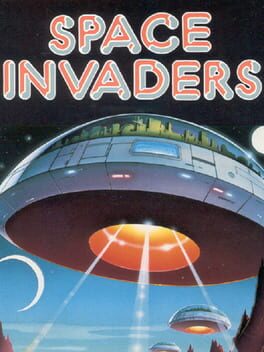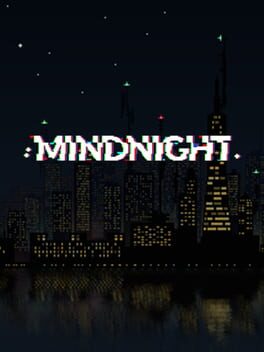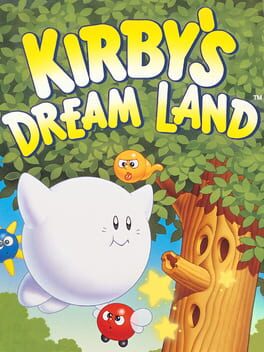Chariot_Rider
1998
Trespasser is a fascinating oddity. Ultimately, I have a lot of respect for its ambition, even if its execution leaves a lot to be desired. Even to this day, there isn't all that much quite like Trespasser, and there are definitely reasons for that.
It's controls are pretty sluggish, which isn't inherently a bad thing. Your floppy noodle arm makes it trickier to line up shots, which makes charging dinos a lot more threatening than they would be with a standard "crosshair at the center of the screen" sort of aiming. There's a certain tactility to the shooting in Trespasser that really is only rivaled by VR shooters.
The level design aims for realism, often at the expense of fun, and even then some of its levels feels incredibly goofy. The huge map is certainly reflective of an actual island's size, but with your slow walking speed it becomes quite a chore to traverse. That isn't to say that the realism doesn't have its benefits, but the game's systems make those harder to appreciate.
The game's puzzles are baffling at times. None of them are especially difficult, and often it feels like they are less puzzles and more a demonstration of the game's novel physics engine. This is best epitomized by a puzzle at the end of the game with a lever that raises an elevator. You can't press that lever while on the elevator, but there is a really convenient plank of wood waiting to be shot over onto the button. It feels incredibly gamey, like the designer's hand is guiding you to its solution in a way that clashes with the game's aspirations for a realistic, seamless world. This applies to pretty much every puzzle in the game.
Trespasser is a game pulled both in a very gamey and realistic direction in a way that led to a tonally odd game. Nonetheless, no game from the time really tried many of the things Trespasser did, and in that regard it died a pioneers death. This game has physics puzzles that weren't ideal, but it was doing them years before Half Life 2. It has realistic jungles years before Crysis. It achieved a hudless UI, in an admittedly pretty tacky and infamous way. One could easily criticize those aspects of the game, but I also feel it earns a lot of grace purely for the size of its ambition. It's actually an incredibly fascinating time to play, and while I can't really call it a "great" game in the way I might something like Rain World, that shouldn't diminish the value of this game, nor should it even necessarily dissuade anyone else from giving it a try.
It's controls are pretty sluggish, which isn't inherently a bad thing. Your floppy noodle arm makes it trickier to line up shots, which makes charging dinos a lot more threatening than they would be with a standard "crosshair at the center of the screen" sort of aiming. There's a certain tactility to the shooting in Trespasser that really is only rivaled by VR shooters.
The level design aims for realism, often at the expense of fun, and even then some of its levels feels incredibly goofy. The huge map is certainly reflective of an actual island's size, but with your slow walking speed it becomes quite a chore to traverse. That isn't to say that the realism doesn't have its benefits, but the game's systems make those harder to appreciate.
The game's puzzles are baffling at times. None of them are especially difficult, and often it feels like they are less puzzles and more a demonstration of the game's novel physics engine. This is best epitomized by a puzzle at the end of the game with a lever that raises an elevator. You can't press that lever while on the elevator, but there is a really convenient plank of wood waiting to be shot over onto the button. It feels incredibly gamey, like the designer's hand is guiding you to its solution in a way that clashes with the game's aspirations for a realistic, seamless world. This applies to pretty much every puzzle in the game.
Trespasser is a game pulled both in a very gamey and realistic direction in a way that led to a tonally odd game. Nonetheless, no game from the time really tried many of the things Trespasser did, and in that regard it died a pioneers death. This game has physics puzzles that weren't ideal, but it was doing them years before Half Life 2. It has realistic jungles years before Crysis. It achieved a hudless UI, in an admittedly pretty tacky and infamous way. One could easily criticize those aspects of the game, but I also feel it earns a lot of grace purely for the size of its ambition. It's actually an incredibly fascinating time to play, and while I can't really call it a "great" game in the way I might something like Rain World, that shouldn't diminish the value of this game, nor should it even necessarily dissuade anyone else from giving it a try.
I have complicated feelings about Counter Strike Global Offensive because on the one hand, I think it's mechanics are brilliant. It is an extremely well designed, strategic shooter. Matches can have a ton of strategy, prediction, and generally trying to out think and out flank your opponent. This partially comes down to how lethal this game is. Counter Strike kills you incredibly quickly, so it is usually the person who sees their opponent first that wins. As such, positioning and flanking are really important, as is thinking about how your opponent might approach a situation. It's incredibly satisfying, and is one of the most strategic shooters I have ever played. However, actually playing Counter Strike Global Offensive could be an incredibly mixed bag because of the online experience. If you mess up, opponents are likely to yell at you. I have been called an NPC and an AI for making mistakes, as all beginners to a game do. I've had people report my account after some bad plays. Playing Counter Strike can be so stressful because you feel a need to perform well so your team doesn't get mad. With friends this problem can be solved, but finding 4 other people of roughly the same skill level that want to play this is tricky.
Ultimately, I could give a deeper review if I had more time with the game, but unfortunately Counter Strike Global Offensive has been delisted because of the release of Counter Strike 2. This is an incredibly sad and worrying move on Valve's end, and I hope for legacy and preservation's sake it is returned to steam alongside its sequel. Ultimately, Counter Strike is a great game whose competitive community takes it so seriously that it harms my enjoyment.
Ultimately, I could give a deeper review if I had more time with the game, but unfortunately Counter Strike Global Offensive has been delisted because of the release of Counter Strike 2. This is an incredibly sad and worrying move on Valve's end, and I hope for legacy and preservation's sake it is returned to steam alongside its sequel. Ultimately, Counter Strike is a great game whose competitive community takes it so seriously that it harms my enjoyment.
2022
Babbdi is a beautiful expression about the beauty and tragedy of decay. Everyone in this game feels stuck. An old lady struggles with her groceries, clearly overencumbered. She never moves. The architecture itself is her enemy. Everyone here is stuck, and it impacts everyone differently, and everyone copes in their own way.
The architectural stylings of Babbdi are spectacular. This game nails the aura of brutalism, with its towering concrete structures that feel imposing. Its a projection of power, not in opulence, but in raw geometric forms. Personally, I love brutalist architecture because I never entirely know how it makes me feel. I can't flatly say it's pleasant, nor can I say that its entirely dislikable, and thus I am constantly navigating my own thoughts on this artistic style that fill me with awe and dread and amazement and sadness. Babbdi is perhaps the greatest expression of brutalism ever put into a video game. Because I am fascinated by brutalism, the world of Babbdi speaks powerfully to me. The city feels huge, but not repetitive. Every corner of this place feels like its own thing, which is remarkable when you consider how much of this world is made out of concrete.
Part of why these spaces feel so memorable is the game's item system. You can only carry one item at a time, and while there are useful movement items you can find, you can only carry one at a time. I found myself swapping to new equipment all the time, and each one opened up new opportunities to traverse these spaces in their own way. It makes the joys of exploration so satisfying, because you want to find all of the cool movement items, and once you get some powerful tech, you have a greater ability to explore the intriguing nooks and crannies that caught your attention before you could reach them.
Babbdi is a game about hope, longing, struggle, and the price of these things, and I highly encourage playing this game.
The architectural stylings of Babbdi are spectacular. This game nails the aura of brutalism, with its towering concrete structures that feel imposing. Its a projection of power, not in opulence, but in raw geometric forms. Personally, I love brutalist architecture because I never entirely know how it makes me feel. I can't flatly say it's pleasant, nor can I say that its entirely dislikable, and thus I am constantly navigating my own thoughts on this artistic style that fill me with awe and dread and amazement and sadness. Babbdi is perhaps the greatest expression of brutalism ever put into a video game. Because I am fascinated by brutalism, the world of Babbdi speaks powerfully to me. The city feels huge, but not repetitive. Every corner of this place feels like its own thing, which is remarkable when you consider how much of this world is made out of concrete.
Part of why these spaces feel so memorable is the game's item system. You can only carry one item at a time, and while there are useful movement items you can find, you can only carry one at a time. I found myself swapping to new equipment all the time, and each one opened up new opportunities to traverse these spaces in their own way. It makes the joys of exploration so satisfying, because you want to find all of the cool movement items, and once you get some powerful tech, you have a greater ability to explore the intriguing nooks and crannies that caught your attention before you could reach them.
Babbdi is a game about hope, longing, struggle, and the price of these things, and I highly encourage playing this game.
1997
I love Armored Core. This game has the trappings of a fascinating action game. It is clunky, but it could easily be argued that its clunk is often the point. Armored Core wants to sell you on the fact that piloting a huge war machine is actually pretty sluggish and clunky, and it succeeds at this while also improving over the course of the game. As you buy new parts, old annoying aspects of control fade away and your machine feels more modern and powerful.
The progression in this game is noteworthy. In between missions you can buy items at a shop, but this isn't a simply case of buying the best item with the best stats because everything has tradeoffs. Having heavy armor or lots of guns will make your vehicle overweight. This can be overcome by having more powerful legs, but these use more energy so you would need a better generator and the bigger generator will be heavier and at that point maybe its worth looking at a different kind of gun that's potentially lighter to do the job. There is a lot to consider when building your mech, and this makes the choice of how to build incredibly meaningful. There are some missions where certain loadouts are better, and you often have to figure out what the optimal loadout will be based on a description alone. This makes a first time run incredibly tense because you don't know what will in store for you, especially because missions will often throw in unexpected surprises into missions. These surprises are fascinating in the sense that AC is such a plan heavy game. I spend a long time planning my mech and optimizing its approach to suit different missions, but these surprises can counter planning to a certain extent and force you to always anticipate unknown threats. One downside of this is that repeat playthroughs can't quite carry the same level of surprise, and the game becomes a lot easier and loses the surprise that keeps you on the tips of your toes.
Armored Core's mission design does a lot for the game. Each mission presents a unique obstacle to the player and each stands on their own. Overall, I like the missions, though there are some that clearly stand out over the others. In particular, the game's final mission is genuinely awful, and is a greater drop in quality than Xen was for Half Life.
Overall, Armored Core is an excellent action game. It's controls are clunky, but that's fitting for the sort of experience the game is going for and only rarely detracts from the experience. It's economic themes pair well with the game's writing, creating an effective critique of capitalism with only a few simple elements
The progression in this game is noteworthy. In between missions you can buy items at a shop, but this isn't a simply case of buying the best item with the best stats because everything has tradeoffs. Having heavy armor or lots of guns will make your vehicle overweight. This can be overcome by having more powerful legs, but these use more energy so you would need a better generator and the bigger generator will be heavier and at that point maybe its worth looking at a different kind of gun that's potentially lighter to do the job. There is a lot to consider when building your mech, and this makes the choice of how to build incredibly meaningful. There are some missions where certain loadouts are better, and you often have to figure out what the optimal loadout will be based on a description alone. This makes a first time run incredibly tense because you don't know what will in store for you, especially because missions will often throw in unexpected surprises into missions. These surprises are fascinating in the sense that AC is such a plan heavy game. I spend a long time planning my mech and optimizing its approach to suit different missions, but these surprises can counter planning to a certain extent and force you to always anticipate unknown threats. One downside of this is that repeat playthroughs can't quite carry the same level of surprise, and the game becomes a lot easier and loses the surprise that keeps you on the tips of your toes.
Armored Core's mission design does a lot for the game. Each mission presents a unique obstacle to the player and each stands on their own. Overall, I like the missions, though there are some that clearly stand out over the others. In particular, the game's final mission is genuinely awful, and is a greater drop in quality than Xen was for Half Life.
Overall, Armored Core is an excellent action game. It's controls are clunky, but that's fitting for the sort of experience the game is going for and only rarely detracts from the experience. It's economic themes pair well with the game's writing, creating an effective critique of capitalism with only a few simple elements
1995
It is astounding how much of an improvement Kirby's Dream Land is to its prequel. DL1 is a perfectly serviceable platformer, but 2 has so much more identity. The introduction of copy abilities alone does a lot to make Kirby's gameplay much more interesting. With copy abilities, I found myself considering what would be best to carry forward to other parts of the game, giving a lot more moment to moment decision making that simply wasn't present in the more reactive gameplay of 1.
Alongside copies, the level design has also largely improved. There are still some levels that lack identity, but there are more memorable moments on offer here. Levels like the maze filled with crumbling cloud blocks was a real highlight. However, where 2's levels reach a more iconic high, it also has its mean moments. One standout level is an autoscroller where you have to guess what path is correct, and if you are wrong you die. As far as I could tell, there was no pattern to discerning the "correct" path. Autoscrollers in general were responsible for a decent amount of unfair moments in this game, though sometimes it gave levels a bit of spice.
I like the star life system. While lives aren't all that meaningful if you just want to beat the game since you can use as many continues as you want, for those dedicated to a 1 credit clear they add a lot to the levels. Stars are sometimes used as rewards for explorative players or for holding onto upgrades past a difficult section.
The animal buddies are fun too. They're the best example of how much cuter this game looks than its predecessor. It's very pretty. Mechanically, the animal friends are fun and combining them with copy abilities gave me some interesting experimentation. The bird is easily the best, where as the fish was a lot more situational. Holding onto them as long as possible was a fun challenge.
Bosses in this game were generally better too. The ice block guy was trivially easy, but everyone else felt like they posed a threat while also not being overly tedious to fight. The Dedede fight is quite similar to the first game, but a few changes make it a lot less of a waiting game, and it is instead a bloodbath. I probably died the most at Dedede than I did anywhere else. That being said, his anger causing him to throw out more stars that are riskier to collect is an inspired change that I appreciate after the boring drawn out fight of the first game.
Overall, these changes cumulatively create a much more engaging and memorable experience than its predecessor.
Alongside copies, the level design has also largely improved. There are still some levels that lack identity, but there are more memorable moments on offer here. Levels like the maze filled with crumbling cloud blocks was a real highlight. However, where 2's levels reach a more iconic high, it also has its mean moments. One standout level is an autoscroller where you have to guess what path is correct, and if you are wrong you die. As far as I could tell, there was no pattern to discerning the "correct" path. Autoscrollers in general were responsible for a decent amount of unfair moments in this game, though sometimes it gave levels a bit of spice.
I like the star life system. While lives aren't all that meaningful if you just want to beat the game since you can use as many continues as you want, for those dedicated to a 1 credit clear they add a lot to the levels. Stars are sometimes used as rewards for explorative players or for holding onto upgrades past a difficult section.
The animal buddies are fun too. They're the best example of how much cuter this game looks than its predecessor. It's very pretty. Mechanically, the animal friends are fun and combining them with copy abilities gave me some interesting experimentation. The bird is easily the best, where as the fish was a lot more situational. Holding onto them as long as possible was a fun challenge.
Bosses in this game were generally better too. The ice block guy was trivially easy, but everyone else felt like they posed a threat while also not being overly tedious to fight. The Dedede fight is quite similar to the first game, but a few changes make it a lot less of a waiting game, and it is instead a bloodbath. I probably died the most at Dedede than I did anywhere else. That being said, his anger causing him to throw out more stars that are riskier to collect is an inspired change that I appreciate after the boring drawn out fight of the first game.
Overall, these changes cumulatively create a much more engaging and memorable experience than its predecessor.
1993
It's easy to understand why Doom became such an influential and iconic game. It's action holds up decades later, and its visuals have aged gracefully into being cartoony fun. Its first episodes are a great opening for what Doom can be, with a good mix of action packed tech bases and puzzle hunts, however I feel that Doom is held back by its later episodes which become a lot more gimmicky, brutal, or sloggish. Some levels in later episodes would leave me wandering for ages. I had killed all of the demons, but because I couldn't pin down some obtuse and poorly hidden key, I was stuck. However, these episodes can only hold Doom back so much, and overall the game outshines it weaker moments, laying out an iconic groundwork for future games and modders to play with.
2024
Crow Country is a very decent horror game. I enjoyed it, but there were some aspects that I felt weren't executed perfectly.
The game's presentation is what first caught my attention, and it's really nice. The excellent choice to set the game in a theme park creates a great opportunity to have a lot of fun locales, and the game does a great job at contrasting the jovial amusement park with the decay and horrible creatures that currently inhabit it.
One of my favorite things about Crow Country is how its combat works. To shoot enemies you have to stop your movement and aim in 3D, which is made harder because your character's hand isn't entirely stable and you have to account for that movement, but also many of the enemies have very jittery movement. The bipedal monsters have extremely twitchy torsos so they might end up dodging a bullet if you aren't careful. I can imagine an alternate universe version of this game where the enemies walk like zombies from Resident Evil 1 where they walk straight towards the player without altering their course, and in that version of the game the enemy movement would be too predictable. Having your swaying aim and twitchy enemies gives the combat a sense of unpredictability that really works for a horror game. Your bullets also will deal more damage the closer an enemy is to you, which creates a tense risk reward where you want to wait for enemies to be close so you can save as many bullets as possible, but also that puts you in a risky spot, especially if you happen to miss (which the previously mentioned systems make more likely). The result is combat with some meaty tension. That being said, it's also easy in a lot of situations to just avoid the enemies which maybe isn't ideal.
Unfortunately, the puzzles are my strongest criticism. I don't think all of the puzzles are terrible or anything, but so many of them fall into the camp of "find the note that gives you the code" puzzle design. If you just read the notes littered around the game, you can often just find the answers to a puzzle, which undercuts a lot of the thinking you might have to do. As an example, there is one room where you can shoot fish for points, and you have to get 21 points. That's a puzzle someone could math out, but also there's just a note somewhere else that tells you the literal order you need to shoot the fish to score 21 points, and at that point the puzzle is just a literal shooting gallery test. Not all of the puzzles were terrible, and even at their worst the puzzles were just not all that deep. I was just a bit underwhelmed by the puzzles in this game and would have liked to see some more challenging logical quandaries.
All that being said, I like the story. The story of the amusement park is fun to learn about and the character writing is pretty competent. I'll avoid saying too much about it for people that want to play the game themselves, but the strongest part of the narrative for me was at the very end when the mysterious Mr. Crow explains where the monsters come from. It's an incredible reveal, one that raises a ton of questions and dark implications that I was not expecting, while also tying together some really interesting themes about short sightedness and greed. Like I said, I won't fully explain it in case you want to play the game yourself, but the ending is worth experiencing.
Overall, Crow Country is a really solid game. It has really good combat, a beautiful aesthetic, and a story that perhaps starts with a lot of what you would expect that takes some great swerves into truly horrific implications. I definitely recommend giving it a playthrough, even if the puzzles are a bit weak.
The game's presentation is what first caught my attention, and it's really nice. The excellent choice to set the game in a theme park creates a great opportunity to have a lot of fun locales, and the game does a great job at contrasting the jovial amusement park with the decay and horrible creatures that currently inhabit it.
One of my favorite things about Crow Country is how its combat works. To shoot enemies you have to stop your movement and aim in 3D, which is made harder because your character's hand isn't entirely stable and you have to account for that movement, but also many of the enemies have very jittery movement. The bipedal monsters have extremely twitchy torsos so they might end up dodging a bullet if you aren't careful. I can imagine an alternate universe version of this game where the enemies walk like zombies from Resident Evil 1 where they walk straight towards the player without altering their course, and in that version of the game the enemy movement would be too predictable. Having your swaying aim and twitchy enemies gives the combat a sense of unpredictability that really works for a horror game. Your bullets also will deal more damage the closer an enemy is to you, which creates a tense risk reward where you want to wait for enemies to be close so you can save as many bullets as possible, but also that puts you in a risky spot, especially if you happen to miss (which the previously mentioned systems make more likely). The result is combat with some meaty tension. That being said, it's also easy in a lot of situations to just avoid the enemies which maybe isn't ideal.
Unfortunately, the puzzles are my strongest criticism. I don't think all of the puzzles are terrible or anything, but so many of them fall into the camp of "find the note that gives you the code" puzzle design. If you just read the notes littered around the game, you can often just find the answers to a puzzle, which undercuts a lot of the thinking you might have to do. As an example, there is one room where you can shoot fish for points, and you have to get 21 points. That's a puzzle someone could math out, but also there's just a note somewhere else that tells you the literal order you need to shoot the fish to score 21 points, and at that point the puzzle is just a literal shooting gallery test. Not all of the puzzles were terrible, and even at their worst the puzzles were just not all that deep. I was just a bit underwhelmed by the puzzles in this game and would have liked to see some more challenging logical quandaries.
All that being said, I like the story. The story of the amusement park is fun to learn about and the character writing is pretty competent. I'll avoid saying too much about it for people that want to play the game themselves, but the strongest part of the narrative for me was at the very end when the mysterious Mr. Crow explains where the monsters come from. It's an incredible reveal, one that raises a ton of questions and dark implications that I was not expecting, while also tying together some really interesting themes about short sightedness and greed. Like I said, I won't fully explain it in case you want to play the game yourself, but the ending is worth experiencing.
Overall, Crow Country is a really solid game. It has really good combat, a beautiful aesthetic, and a story that perhaps starts with a lot of what you would expect that takes some great swerves into truly horrific implications. I definitely recommend giving it a playthrough, even if the puzzles are a bit weak.
2012
Ico is an exceptional work of art, and is among the greatest games of all time. There is a magic to Ico that got me to invest heavily in its characters, to feel the thins the characters felt. When the story required me to leave Yorda behind, even if only for a little bit, I was always extremely anxious because I was worried something might happen to her. Ico could be described as a game about what it truly means to care for another person, going out of your way to bond with another to fight against evil forces.
The storytelling of Ico is amazing in its minimalism. There are very few lines of dialogue, but the game suggests so much with its few simple elements. The empty castle invites questions about how it was used, and what it's purpose was. You are invited to think about why the Queen does what she does. Do the spirits work for her, and if so, why? Why was Ico sacrificed? If you pay attention there are small repeated details that aren't enough to form a whole picture, but in suggesting that there are patterns, that the world is deliberately designed, it invites players to think about the castle and what it means for themselves. And the fact that it can convey its story primarily through interactive elements speaks to the strength of Ico's storytelling chops and the potential for games as a whole. "Story" in games is often thought of as all of the stuff that is there to be experienced but not interacted with. Cutscenes, data logs, journal entries, these are what people usually point to when they discuss "narrative" in games, but Ico is light on that. Rather its story is felt in the actions you perform. Its in the tension of a perilous jump from a chain high above a court yard. Its in the terror of watching Yorda get carried away by a bird spirit.
The architecture of the game helps significantly as well. The castle's architecture has a natural sense to it, while also feeling otherworldly and distant. The tall rooves and anxious spires make the protagonists feel small and fragile in the shadow of such a formidable structure. One could break down the architecture in a full video or article, and maybe I will. I'll save that for a future time though.
There are some issues with Ico, some that are quite noticeable, but I find myself very willing to forgive these mistakes. Some are technical. Yorda's AI sometimes is a bit odd and can feel a bit artificial at times as you wait for her to get the idea that she has to jump across a gap to join you. It's not bad because its slow, but it reveals a bit of the illusion that this is just a computer game. However, being on the PS2, this is an understandable issue. Making fully convincing human AIs in games is still hard today, let alone back then. Secondly, there are a decent number of puzzles that I got stuck on, not because I had not figured out the solution, but because I didn't know about a mechanic. I hadn't realized that I could swing on chains, which made one puzzle impassible until I looked it up. Another example is more egregious. After getting the sword you are taught it can cut ropes. Handy. However, there is a part where there is a bridge held open by a rope slightly above Ico's head. It looks like he can hit it with the sword, but swings won't damage it. I assumed I needed a new solution. I was wrong. Instead I just had to get the 3 hit combo to swing my sword in the air for the swing to connect. Even knowing about how to solve the puzzle, it was really finnicky to line up. This puzzle would be no different if you could just hit the rope with a normal swing. Thirdly, there are a few jumps that are really bad. The first is a jump that you have to make in time with a spring machine to launch yourself into the air. I was attempting this for minutes before it worked, and the timing is way too strict. I had the right idea but gave up on it because I didn't think it could throw me higher. Then, right after that the wheel jump onto the bars took me minutes of attempts, and has no right being as precise as it is. Most of the game has pretty generous and forgiving platforming, so these two examples stick out significantly, and could cause some people who would otherwise love the rest of the game to give up because they can't make the jump.
Even with these problems, Ico is a masterpiece and its hard for me to hold them against the game too much. Its easy to see why Ico is such an influence on gaming.
The storytelling of Ico is amazing in its minimalism. There are very few lines of dialogue, but the game suggests so much with its few simple elements. The empty castle invites questions about how it was used, and what it's purpose was. You are invited to think about why the Queen does what she does. Do the spirits work for her, and if so, why? Why was Ico sacrificed? If you pay attention there are small repeated details that aren't enough to form a whole picture, but in suggesting that there are patterns, that the world is deliberately designed, it invites players to think about the castle and what it means for themselves. And the fact that it can convey its story primarily through interactive elements speaks to the strength of Ico's storytelling chops and the potential for games as a whole. "Story" in games is often thought of as all of the stuff that is there to be experienced but not interacted with. Cutscenes, data logs, journal entries, these are what people usually point to when they discuss "narrative" in games, but Ico is light on that. Rather its story is felt in the actions you perform. Its in the tension of a perilous jump from a chain high above a court yard. Its in the terror of watching Yorda get carried away by a bird spirit.
The architecture of the game helps significantly as well. The castle's architecture has a natural sense to it, while also feeling otherworldly and distant. The tall rooves and anxious spires make the protagonists feel small and fragile in the shadow of such a formidable structure. One could break down the architecture in a full video or article, and maybe I will. I'll save that for a future time though.
There are some issues with Ico, some that are quite noticeable, but I find myself very willing to forgive these mistakes. Some are technical. Yorda's AI sometimes is a bit odd and can feel a bit artificial at times as you wait for her to get the idea that she has to jump across a gap to join you. It's not bad because its slow, but it reveals a bit of the illusion that this is just a computer game. However, being on the PS2, this is an understandable issue. Making fully convincing human AIs in games is still hard today, let alone back then. Secondly, there are a decent number of puzzles that I got stuck on, not because I had not figured out the solution, but because I didn't know about a mechanic. I hadn't realized that I could swing on chains, which made one puzzle impassible until I looked it up. Another example is more egregious. After getting the sword you are taught it can cut ropes. Handy. However, there is a part where there is a bridge held open by a rope slightly above Ico's head. It looks like he can hit it with the sword, but swings won't damage it. I assumed I needed a new solution. I was wrong. Instead I just had to get the 3 hit combo to swing my sword in the air for the swing to connect. Even knowing about how to solve the puzzle, it was really finnicky to line up. This puzzle would be no different if you could just hit the rope with a normal swing. Thirdly, there are a few jumps that are really bad. The first is a jump that you have to make in time with a spring machine to launch yourself into the air. I was attempting this for minutes before it worked, and the timing is way too strict. I had the right idea but gave up on it because I didn't think it could throw me higher. Then, right after that the wheel jump onto the bars took me minutes of attempts, and has no right being as precise as it is. Most of the game has pretty generous and forgiving platforming, so these two examples stick out significantly, and could cause some people who would otherwise love the rest of the game to give up because they can't make the jump.
Even with these problems, Ico is a masterpiece and its hard for me to hold them against the game too much. Its easy to see why Ico is such an influence on gaming.
1982
Yars Revenge is an interesting historical oddity that is definitely worth a bit of time. This might be one of the most visually stunning games on the Atari 2600. On a system where characters are often just a square, and other items are blocky, Yars' Revenge feels abstract in a way that evokes surreality. The central color pillar is a flowing rainbow of color shifting through hues. I don't entirely know what it is supposed to be, but it looks very cool. Likewise, when the base explodes, the screen becomes awash in triumphant color.
Yars' Revenge certainly feels unintuitive. I can pick up and play many shmups and generally get how it works very fast, this is a game that took awhile to figure out. Flying into enemies is usually death in games, but maybe back in 1982 that wasn't as ingrained in players. Perhaps in that regard this game has been hurt by the passing of time.
Even if you know how the game works, Yars has problems. There are two levels the game cycles through, and while these add variety, the levels don't feel nearly as varied as modern offerings, or even games that would come out a few years later. The game does get harder over time because the chaser missile gets faster, but that's the main difficulty spike. Perhaps it is unfair to compare Yars to later games in that department because it is on such limited hardware, but other space shooters get harder by throwing in more obstacles and enemies, or harder enemies, and it lets those games feel much better paced.
Yars' Revenge is a graphically impressive game for its system, and even separated from its limitation and taken purely on its own merits it still looks great. It's easy to see why this game made such a strong impression, because nothing looked quite like it. Even the MOMA recognized this game's value today and included it in its collection. It's worth a play, if only because it's short and you can get the gist quickly, and its historically important and visually iconic.
Yars' Revenge certainly feels unintuitive. I can pick up and play many shmups and generally get how it works very fast, this is a game that took awhile to figure out. Flying into enemies is usually death in games, but maybe back in 1982 that wasn't as ingrained in players. Perhaps in that regard this game has been hurt by the passing of time.
Even if you know how the game works, Yars has problems. There are two levels the game cycles through, and while these add variety, the levels don't feel nearly as varied as modern offerings, or even games that would come out a few years later. The game does get harder over time because the chaser missile gets faster, but that's the main difficulty spike. Perhaps it is unfair to compare Yars to later games in that department because it is on such limited hardware, but other space shooters get harder by throwing in more obstacles and enemies, or harder enemies, and it lets those games feel much better paced.
Yars' Revenge is a graphically impressive game for its system, and even separated from its limitation and taken purely on its own merits it still looks great. It's easy to see why this game made such a strong impression, because nothing looked quite like it. Even the MOMA recognized this game's value today and included it in its collection. It's worth a play, if only because it's short and you can get the gist quickly, and its historically important and visually iconic.
2005
So, I think this is the correct game, but just to be clear, I am reviewing the version of Yars' Revenge from the Atari Vault collection on Steam. It has a different box art and is listed as a 2600 game.
A lot of what I have to say about Yars' Return is the same as my Revenge review so check that out if you are interested. However, I don't find Yars' Return nearly as strong as Revenge because of the change of level layout. Return is such a tedious game. On the levels where you have a block to shoot through, it takes ages to beat. Usually its not hard to dodge the projectiles, but it takes ages to tediously blast through all of the blocks to land your shot. This applies as the game gets harder. You have a bit less wiggle room, but fundamentally its the same pattern of going back and forth to finish off the center. The original is simple, and that worked in its favor. This just gets tedious and clunky and I would recommend the original over this any day.
A lot of what I have to say about Yars' Return is the same as my Revenge review so check that out if you are interested. However, I don't find Yars' Return nearly as strong as Revenge because of the change of level layout. Return is such a tedious game. On the levels where you have a block to shoot through, it takes ages to beat. Usually its not hard to dodge the projectiles, but it takes ages to tediously blast through all of the blocks to land your shot. This applies as the game gets harder. You have a bit less wiggle room, but fundamentally its the same pattern of going back and forth to finish off the center. The original is simple, and that worked in its favor. This just gets tedious and clunky and I would recommend the original over this any day.
1979
Galaxian is a simple game that does what it sets out to do decently well, but its hard to play after playing some games that were influenced by it. The limitation of only having one bullet is neat and does make your shots feel like they matter more. In the heat of gameplay when the bugs are raining down bullets and you are dodging the game actually feels incredibly fun. Having the flagships be worth more points when they are alone and charging is a nice touch that encourages precise, aimed shots instead of just spamming bullets. One of the downsides to this game is that the unit formations don't change a ton from round to round, so the rounds can feel a bit samey over time, which is one of the big improvements Galaga made over this. Presentationally Galaxian is nice, with good sound effects, great explosions, and iconic ship designs. Its a bit antiquated and definitely not as good as Galaga, but its worth checking out, especially because it is included in many of the Namco collections, so there is no reason not to play it
1991
Another World holds up, even in 2023. I was blown away by the games opening, with its well composed animated scenes, rotoscoping, and hefty sound effects that drive home the squeal of a car's wheels, the gentle hum of computers, and the sudden crack of lightning. This other world is sold with its careful pairing of music and visuals, with shots drawn from cinematic technique.
Everything after this cutscene still amazes. There are no words you can understand in Another World, with the story instead being carried by art direction. There's a clarity to every screen, at least with regards to everything important. The path forward isn't obstructed with visual clutter, and important gameplay factors are well telegraphed. Wires visually die out when disconnected. The red shields stand out against the dark purple backgrounds, and even indicate how long they have left with the fullness of their pixels, communicating very important information quickly.
The gameplay of Another World will see players dying repeatedly in incredibly strict platforming challenges and demanding combat encounters. At points it admittedly could be a bit much. Dying several times in a row because I missed a jump brought the pace down a bit, but the game never reached a depth of tedium that made me want to abandon the game. There is the occasional bit of moon logic in Another World, because it is still a narrative game from the 90s. One example is the puzzle where you have to threaten an alien who is trapped in a room with you, which for some reason closes a door upstairs? I couldn't figure out what the link between the two was, and I ultimately discovered it through trial and error. Fortunately, most puzzles make logical sense, even if it takes awhile to figure out. The puzzles actually can be quite clever at times, asking the player to use real world logic to solve these video game puzzles, which isn't something games always test. As an example, there is one puzzle where you have to drop a ball onto a guard to progress. I couldn't figure out how to time the drop but I got it out of sheer luck. When watching my footage back I realized that you were supposed to look at the reflection in the glass to realize when the guard was under the ball. It's extremely clever to ask a player to use reflection, and makes this world feel like its not just a string of convenient video game puzzles all strung together conveniently with the connecting framework of mechanics.
Another World transcends time. It was great back when it released, and it is just as great today. Unlike many classic games where I have to approach it with the tech and limitations in mind, I just can appreciate Another World as it is. It's stunning vistas, charming architecture, and intriguing world make this an unforgettable experience.
Everything after this cutscene still amazes. There are no words you can understand in Another World, with the story instead being carried by art direction. There's a clarity to every screen, at least with regards to everything important. The path forward isn't obstructed with visual clutter, and important gameplay factors are well telegraphed. Wires visually die out when disconnected. The red shields stand out against the dark purple backgrounds, and even indicate how long they have left with the fullness of their pixels, communicating very important information quickly.
The gameplay of Another World will see players dying repeatedly in incredibly strict platforming challenges and demanding combat encounters. At points it admittedly could be a bit much. Dying several times in a row because I missed a jump brought the pace down a bit, but the game never reached a depth of tedium that made me want to abandon the game. There is the occasional bit of moon logic in Another World, because it is still a narrative game from the 90s. One example is the puzzle where you have to threaten an alien who is trapped in a room with you, which for some reason closes a door upstairs? I couldn't figure out what the link between the two was, and I ultimately discovered it through trial and error. Fortunately, most puzzles make logical sense, even if it takes awhile to figure out. The puzzles actually can be quite clever at times, asking the player to use real world logic to solve these video game puzzles, which isn't something games always test. As an example, there is one puzzle where you have to drop a ball onto a guard to progress. I couldn't figure out how to time the drop but I got it out of sheer luck. When watching my footage back I realized that you were supposed to look at the reflection in the glass to realize when the guard was under the ball. It's extremely clever to ask a player to use reflection, and makes this world feel like its not just a string of convenient video game puzzles all strung together conveniently with the connecting framework of mechanics.
Another World transcends time. It was great back when it released, and it is just as great today. Unlike many classic games where I have to approach it with the tech and limitations in mind, I just can appreciate Another World as it is. It's stunning vistas, charming architecture, and intriguing world make this an unforgettable experience.
1978
I reviewed this as day 2 of my Arcade a Day series and my full review can be found below.
https://arcadedaily.wordpress.com/2024/01/02/space-invaders/
https://arcadedaily.wordpress.com/2024/01/02/space-invaders/
2017
Mindnight is a fun social deduction game with friends. It's incredibly simple, but can lead to interesting social moments. It's structurally quite similar to Secret Hitler where multiple policies have to be enacted for either team to win, which to a certain extent works against this game. Mindnight is incredibly mechanically simple, but that also means that in comparison to other social deduction games it doesn't offer as much to go on when making decisions. As a result, the first voting round almost always plays out the same, and as a result games take awhile to get going, where as other social deduction games get to the scheming and accusation much faster. It's a solid time, but I would definitely choose a social deduction games that is slightly more mechanically dense with a few more things going on over this.
The UI is also not entirely ideal. The game opens with a tutorial movie which works but feels a bit odd, and the UI feels cluttered with a mictrotransaction store and oddness in the server setup. A decent amount of the playtime I have in this game was spent not realizing that the host had to press a button, even though everyone had readied, or it took awhile to learn how to equip a skin, and overall the UI felt a bit lacking. Functional, but with enough small hiccups to be noticeable. However this is worth checking out with some friends for a night.
The UI is also not entirely ideal. The game opens with a tutorial movie which works but feels a bit odd, and the UI feels cluttered with a mictrotransaction store and oddness in the server setup. A decent amount of the playtime I have in this game was spent not realizing that the host had to press a button, even though everyone had readied, or it took awhile to learn how to equip a skin, and overall the UI felt a bit lacking. Functional, but with enough small hiccups to be noticeable. However this is worth checking out with some friends for a night.
1992
Kirby’s Dream Land is short enough that it doesn’t overstay it’s welcome. It’s cute and has some charming character designs which help elevate it above other platformers of a similar caliber. While some enemies didn’t stand out all that much, I others were set apart by simply and unique changes, like not being able to be sucked up or having a weird movement pattern.
Kirby is known as an east series, and to an extent it is. The first few levels don’t put up that much resistance, but that’s typical of almost platformers. However the later levels have enough tricks that you have to stay on your toes, even if just a bit. It’s not mindless. In fact, by the end of the game I had to use a continue in the final boss rush.
The Dedexe fight was a bit annoying. I am not sure if there are other ways of damaging him, but I could only damage him by sucking up stars, which he only releases with two attacks. One of them backs you into a corner and can easily do damage, and the other is a big jump that releases stars. That’s the only move I could consistently damage him with, but it’s all up to luck if he’s going to throw it. He could throw out out 3 times in a row, or wait 30 seconds. It made the final boss boring because I spent most of my time waiting. It’s trivial to dodge the other attacks, so it was just me waiting for him to get his stuff over with so I could move on.
Overall, it’s a solid time. It’s worth an hour to play through it at least once. I also appreciate the harder bonus game, but it’s boss design is pretty rough so I didn’t get too far into it, but for big Kirby fans it’s nice to have.
Kirby is known as an east series, and to an extent it is. The first few levels don’t put up that much resistance, but that’s typical of almost platformers. However the later levels have enough tricks that you have to stay on your toes, even if just a bit. It’s not mindless. In fact, by the end of the game I had to use a continue in the final boss rush.
The Dedexe fight was a bit annoying. I am not sure if there are other ways of damaging him, but I could only damage him by sucking up stars, which he only releases with two attacks. One of them backs you into a corner and can easily do damage, and the other is a big jump that releases stars. That’s the only move I could consistently damage him with, but it’s all up to luck if he’s going to throw it. He could throw out out 3 times in a row, or wait 30 seconds. It made the final boss boring because I spent most of my time waiting. It’s trivial to dodge the other attacks, so it was just me waiting for him to get his stuff over with so I could move on.
Overall, it’s a solid time. It’s worth an hour to play through it at least once. I also appreciate the harder bonus game, but it’s boss design is pretty rough so I didn’t get too far into it, but for big Kirby fans it’s nice to have.
